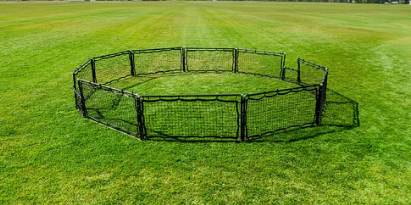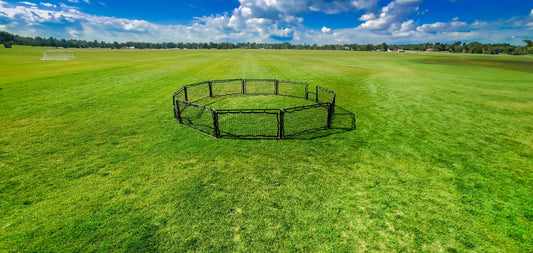Throwing and catching games have been popular forms of recreational activities for centuries, transcending age groups and cultures. Beyond their inherent fun, these games provide a plethora of benefits that contribute to physical, cognitive, and social development. From honing motor skills and coordination to fostering teamwork and social interaction, the significance of throwing and catching games extends far beyond simple amusement. In this article, we will explore the diverse advantages of engaging in these games and shed light on why they continue to be cherished by individuals of all ages.
Physical Development: Throwing and catching games offer numerous physical benefits. These activities require players to utilize their arms, shoulders, and hands, thereby enhancing muscle strength, flexibility, and coordination. The repeated action of throwing and catching promotes the development of hand-eye coordination and improves reflexes. These skills are not only crucial for sports but also have practical applications in daily life, such as catching objects or playing other recreational games.
Furthermore, throwing and catching games are excellent forms of cardiovascular exercise. Engaging in these activities helps increase heart rate, improve stamina, and enhance overall physical fitness. Regular participation in these games can contribute to weight management, reduce the risk of chronic diseases, and strengthen the cardiovascular system.
Cognitive Development: Throwing and catching games also have significant cognitive benefits. These games require players to judge distances, angles, and velocities, thereby enhancing spatial awareness and visual perception. As players anticipate the trajectory of a thrown object, they sharpen their analytical thinking and problem-solving skills.
Moreover, these games improve concentration and focus. The fast-paced nature of throwing and catching requires individuals to stay alert and react quickly to incoming objects. This ability to maintain attention can have a positive impact on academic performance and other areas that demand mental concentration.
Throwing and catching games also stimulate creativity and imagination. Players often devise new strategies, invent variations of the games, and adapt to different environments. These activities foster innovation, promote divergent thinking, and encourage individuals to explore and experiment with their surroundings.
Social Development: Throwing and catching games are not solely limited to individual play; they are also highly conducive to social interaction. These games encourage teamwork, cooperation, and communication. Whether played in teams or with friends, throwing and catching games provide an opportunity to develop and strengthen interpersonal skills.
By engaging in these games, individuals learn how to collaborate, strategize, and coordinate with others to achieve a common goal. This enhances their ability to work as part of a team, cultivating essential skills for future academic, professional, and personal endeavors.
Moreover, throwing and catching games promote social bonding and camaraderie. Participating in these activities creates shared experiences and memories, fostering a sense of belonging and friendship among players. It provides an avenue for individuals to connect, engage in friendly competition, and build relationships that extend beyond the game itself.
Below is a list of games that will help assist in these areas of development.

Dodgeball - Dodgeball is an exciting and fast-paced game that involves two teams competing against each other. The objective of the game is for players to throw balls at members of the opposing team while avoiding being hit themselves. The game is typically played in a large, open space such as a gymnasium or an outdoor field.
- Setting up the Game: The playing area is divided into two halves, with a centerline marking the boundary between the two sides. Each team starts on their respective side of the court.
- Teams: Dodgeball is typically played with two teams, but the number of players can vary. The teams are usually of equal size, with an equal number of players on each side. A common setup is 6-10 players per team.
- The Ball: Dodgeball is played with soft, lightweight balls. There are various types of dodgeballs available, such as foam balls or rubber balls. The size and material may vary depending on the preferences and age group of the players.
- Gameplay: The game begins when the referee or an agreed-upon signal starts the match. Players can move anywhere within their own half of the playing area. The objective is to eliminate players from the opposing team by hitting them with a thrown ball below the shoulders.
- Throwing and Dodging: Players throw the dodgeballs at opponents with the aim of making a successful hit. If a player is hit by a thrown ball and it touches their body or clothing, they are considered out and must leave the playing area. However, if a player catches a ball thrown by the opposing team before it touches the ground, the thrower is out, and the catcher's team can bring one of their eliminated players back into the game.
- Boundaries and Safety: Players must stay within their designated half of the court. Stepping over the centerline results in a player being declared out. Additionally, players cannot hold onto a ball for more than a few seconds; they must throw it within a reasonable time frame. The game typically continues until one team eliminates all the players from the opposing team.
Dodgeball offers several benefits, including physical exercise, hand-eye coordination, agility, teamwork, and strategic thinking. The game requires players to be quick on their feet, make split-second decisions, and communicate effectively with their teammates. Dodgeball also promotes sportsmanship, resilience, and the ability to handle both victory and defeat gracefully. Dodgeball is an exhilarating game that combines physical activity, strategy, and teamwork. Whether played casually with friends or competitively in organized leagues, dodgeball provides an engaging and enjoyable experience for players of all ages and skill levels. So gather your team, dodge those balls, and have a blast!
A fun variant of dodgeball is Gaga Ball, which you can find here at Castle Sports.

9 square - 9 Square, is a fast-paced and engaging game that combines elements of volleyball and four square. It is played with a unique square-shaped apparatus consisting of nine smaller squares, arranged in a 3x3 grid. The objective of the game is to eliminate opponents and maintain a position in the central square, while trying to keep the ball from hitting the ground within one's own square.
- Setting up the Game: The 9 Square game requires a 9 Square apparatus, typically consisting of a sturdy frame with nine interconnected squares. The apparatus is elevated off the ground, usually with each square positioned at waist height.
- Players: The game is typically played with 4-9 players, although more players can participate by forming a queue or rotation system. Each player stands in one of the squares, with one player in the center square to start the game.
- The Ball: The game is played with a soft foam ball or a volleyball. The ball is initially served into the central square by the player in the serving square.
- Gameplay: The game begins with the player in the serving square hitting or serving the ball into any of the other squares. The ball must be struck with an open hand or forearm, and it must pass directly over the net and into an opponent's square. Each player can hit the ball only once before it must be sent to another square.
- Ball Movement: Players must hit the ball in a way that it travels into an opponent's square without being intercepted. The ball must be hit with enough force to clear the net and reach an opponent's square, but not with excessive force that makes it difficult for other players to return.
- Square Rotation: As the game progresses, the players try to prevent the ball from hitting the ground in their square. If a player fails to return the ball or if the ball hits the ground in their square, they are eliminated and must exit the game. The remaining players move up to occupy the vacant squares, with a new player entering the game in the lowest square.
- Winning: The objective is to maintain a position in the central square (Square 1) and score points by eliminating opponents. The last player remaining in Square 1 is considered the winner of the round. The game is typically played in a best-of series, with players rotating positions to give everyone an opportunity to play in the center square.
9 Square offers numerous benefits, including physical activity, hand-eye coordination, agility, teamwork, and strategic thinking. The game requires players to react quickly, make precise shots, and communicate effectively with teammates. It promotes friendly competition, sportsmanship, and the ability to adapt to changing situations. 9 Square also offers a fun and engaging way to socialize and build relationships with other players. 9 Square is an exciting and dynamic game that combines elements of volleyball and four square. Whether played casually at a backyard gathering or competitively in organized events, 9 Square provides an enjoyable and interactive experience for players of all ages.

Hot Potato - Hot Potato is a classic children's game that involves passing an object, often a soft ball or a potato-shaped toy, quickly between players while music plays. The objective of the game is to avoid being caught holding the "hot potato" when the music stops. It is a fast-paced and entertaining game that can be played with a group of children or even adults.
- Setting up the Game: Gather players in a circle, ensuring that there is enough space for the participants to pass the object comfortably. Choose a suitable object to serve as the "hot potato," such as a soft ball or a designated toy.
- Music: Prepare a playlist or use a music-playing device to play upbeat music. The music should start and stop abruptly to add excitement to the game. Alternatively, a designated person can sing or hum a tune instead of using recorded music.
- Passing the Hot Potato: Start the music and have the players pass the hot potato from one person to the next around the circle. The object must be passed quickly, without holding onto it for too long. Players can pass the hot potato to the person next to them or across the circle to increase the challenge.
- Stop the Music: Randomly pause the music at various intervals. When the music stops, the player holding the hot potato is considered "out" and must leave the circle or take on a predetermined penalty, such as doing a funny dance or performing a task.
- Continuation: After eliminating a player, the game continues with the remaining participants. Remove one chair or spot in the circle, making it slightly smaller. This adjustment ensures that players have less time to pass the hot potato as the circle gets smaller.
- Winner: The game continues until only one player remains without being eliminated. This player is declared the winner.
Hot Potato is a thrilling and enjoyable game that involves passing an object quickly while music plays. It promotes motor skills, reflexes, social interaction, and attentiveness among players. Whether played at parties, family gatherings, or as a classroom activity, Hot Potato is a simple yet engaging game that can provide enjoyment for all.
Tchoukball - A fantastic game created in Switzerland. To score, a team throws the ball at a rebounder and has it bounce off and land in a scoring zone. Learn more about Tchoukball here. This game can be played with Infinets.
In conclusion, throwing and catching games offer a multitude of benefits that contribute to physical, cognitive, and social development. These games, beyond being sources of amusement, enhance motor skills, coordination, and cardiovascular fitness. Through the act of throwing and catching, individuals sharpen their hand-eye coordination, spatial awareness, and concentration. Additionally, these games foster teamwork, communication, and social interaction, cultivating essential interpersonal skills. Whether it's a game of catch, a round of frisbee, or participating in team sports like baseball or ultimate frisbee, these activities provide holistic benefits for individuals of all ages.
Engaging in throwing and catching games not only promotes physical fitness but also enhances cognitive abilities such as problem-solving, strategic thinking, and creativity. Players learn to analyze distances, angles, and velocities, developing analytical skills that have practical applications in various aspects of life. Furthermore, these games stimulate creativity as players invent new strategies, adapt to different environments, and explore different techniques.
Throwing and catching games also serve as platforms for social connection and bonding. The collaborative nature of these activities encourages teamwork, cooperation, and effective communication. By working together towards a common goal, individuals develop essential skills for future academic, professional, and personal endeavors. Moreover, these games create shared experiences and memories, fostering a sense of belonging and friendship among players.
Whether you're enjoying a leisurely game of catch in the park, participating in an organized sports league, or engaging in an impromptu frisbee match with friends, throwing and catching games offer a wide range of benefits that go beyond mere entertainment. They contribute to physical health, cognitive development, and social interaction, making them a valuable addition to both personal and group activities. So, the next time you grab a ball or frisbee, remember that you're not just engaging in a game, but also reaping the rewards of a well-rounded and fulfilling experience.
For other gaming equipment you might need, click here!







